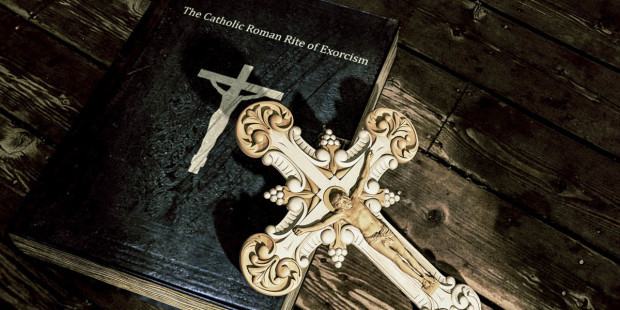Etiquette and the Common Good
April 25, 2018Trump Gives Boost to Abstinence Education
April 25, 2018
A basic overview of the Rite of Exorcism.
By Philip Kosloski, Aleteia, April 25, 2018
 Hollywood loves to exploit Catholic exorcisms. Dozens of movies and TV shows highlight the sacred rite, but do so in an overly dramatic way, focusing almost entirely on the extraordinary phenomenon that can occur during it.
Hollywood loves to exploit Catholic exorcisms. Dozens of movies and TV shows highlight the sacred rite, but do so in an overly dramatic way, focusing almost entirely on the extraordinary phenomenon that can occur during it.
While the portrayal sets the tone for an entertaining horror movie, the average exorcism is nothing like it. According to Fr. Luis Ramírez, coordinator of the annual exorcism conference in Rome, such cases are not common. In speaking with Crux Ramírez said, ““What we see in the movies are the extreme cases, which are very rare … Hence, it doesn’t mean that every exorcism ends as what we see in the theaters. It’s true that there are difficult cases, that can have an impact on us, but this is not what an exorcist deals with every day.”
What, then, does an average exorcism look like?
Fr. Mike Driscoll, in his book Demons, Deliverance and Discernment, gives a basic outline of the rite, explaining the various components to it.
Investigation
First of all, before any exorcism takes place, a thorough investigation takes place. The priest will typically meet with the possessed individual on multiple occasions. Often this can take up to a year (or more). During this time a psychological exam will take place where a psychologist will assist the priest in making a determination of whether the person needs medical or divine assistance.
Preparation
After it has been concluded that something supernatural is occurring, the priest will begin preparations. He will go to confession and celebrate Mass, not giving the devil any fodder that he could use against the priest. Additionally, the possessed person will also be advised to fast, go to confession and receive the Eucharist if they are able.
The Rite
The priest will conduct the rite in a suitable place, with the help of a few assistants. These people must also be prepared spiritually beforehand and are present to aid the priest in various ways and may need to hold down the possessed person. Exorcisms are never performed alone.
The priest, armed with a crucifix, relics of the saints, holy water and the prayers of the rite, begins the exorcism. The litany of the saints is recited and all are sprinkled with holy water. Psalm 53 is said and then specific prayers of exorcism. A Gospel passage is read, along with more exorcism prayers.
If necessary, the priest will pray the Our Father, Hail Mary, Apostle’s Creed, Canticle of Our Lady (Magnificat), Canticle of Zachariah (Benedictus), and Athanasian Creed. More psalms and prayers are said until the demon is driven out.
This process may take multiple sessions to be completed.
In general the priest is not instructed to engage the demon or converse with him, but to simply say the prayers of the rite and trust in God’s power. The devil may try to make some show of his power, but in the end he is weak and a coward. Priests who conduct exorcisms are trained to be calm and collected during an exorcism, having a firm faith that these evil spirits are no match for the divine power of God.
Follow-up
After the exorcism is completed, the individual who was possessed is instructed to frequent the sacraments of confession and the Eucharist to prevent the demon from returning.
Photo: Andrea Cristanta | Shutterstock





 Hollywood loves to exploit Catholic exorcisms. Dozens of movies and TV shows highlight the sacred rite, but do so in an overly dramatic way, focusing almost entirely on the extraordinary phenomenon that can occur during it.
Hollywood loves to exploit Catholic exorcisms. Dozens of movies and TV shows highlight the sacred rite, but do so in an overly dramatic way, focusing almost entirely on the extraordinary phenomenon that can occur during it.